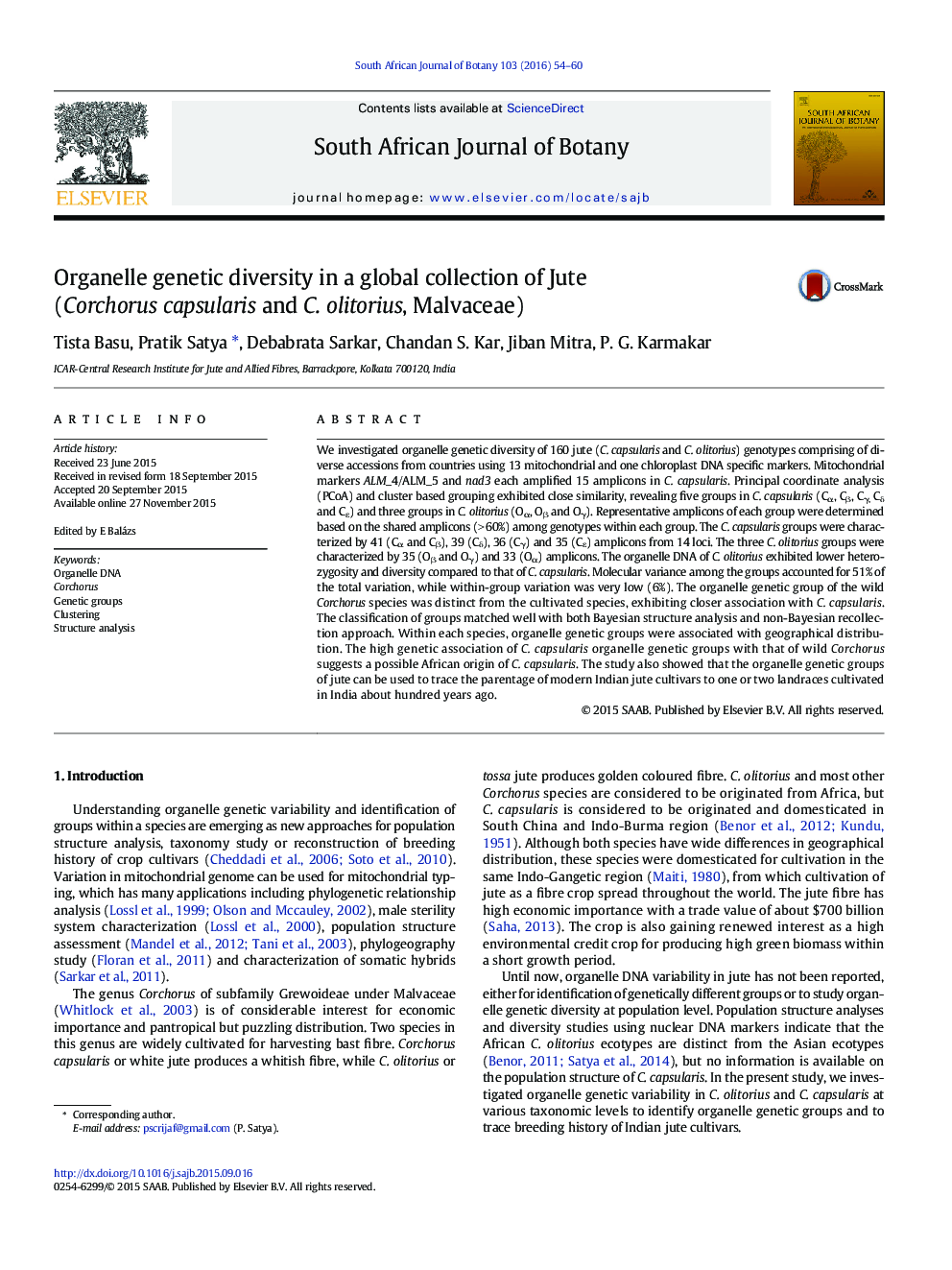| Article ID | Journal | Published Year | Pages | File Type |
|---|---|---|---|---|
| 4520269 | South African Journal of Botany | 2016 | 7 Pages |
•This study reports organelle DNA diversity of 160 jute (Corchorus spp.) lines.•Organelle genetic groups were identified by clustering and multivariate statistics.•The reliability of grouping was validated through population structure analysis.•Eight organelle genetic groups were identified in the population.•Organelle genetic grouping also helped to trace breeding history of jute cultivars.
We investigated organelle genetic diversity of 160 jute (C. capsularis and C. olitorius) genotypes comprising of diverse accessions from countries using 13 mitochondrial and one chloroplast DNA specific markers. Mitochondrial markers ALM_4/ALM_5 and nad3 each amplified 15 amplicons in C. capsularis. Principal coordinate analysis (PCoA) and cluster based grouping exhibited close similarity, revealing five groups in C. capsularis (Cα, Cβ, Cγ, Cδ and Cε) and three groups in C. olitorius (Oα, Oβ and Oγ). Representative amplicons of each group were determined based on the shared amplicons (> 60%) among genotypes within each group. The C. capsularis groups were characterized by 41 (Cα and Cβ), 39 (Cδ), 36 (Cγ) and 35 (Cε) amplicons from 14 loci. The three C. olitorius groups were characterized by 35 (Oβ and Oγ) and 33 (Oα) amplicons. The organelle DNA of C. olitorius exhibited lower heterozygosity and diversity compared to that of C. capsularis. Molecular variance among the groups accounted for 51% of the total variation, while within-group variation was very low (6%). The organelle genetic group of the wild Corchorus species was distinct from the cultivated species, exhibiting closer association with C. capsularis. The classification of groups matched well with both Bayesian structure analysis and non-Bayesian recollection approach. Within each species, organelle genetic groups were associated with geographical distribution. The high genetic association of C. capsularis organelle genetic groups with that of wild Corchorus suggests a possible African origin of C. capsularis. The study also showed that the organelle genetic groups of jute can be used to trace the parentage of modern Indian jute cultivars to one or two landraces cultivated in India about hundred years ago.
